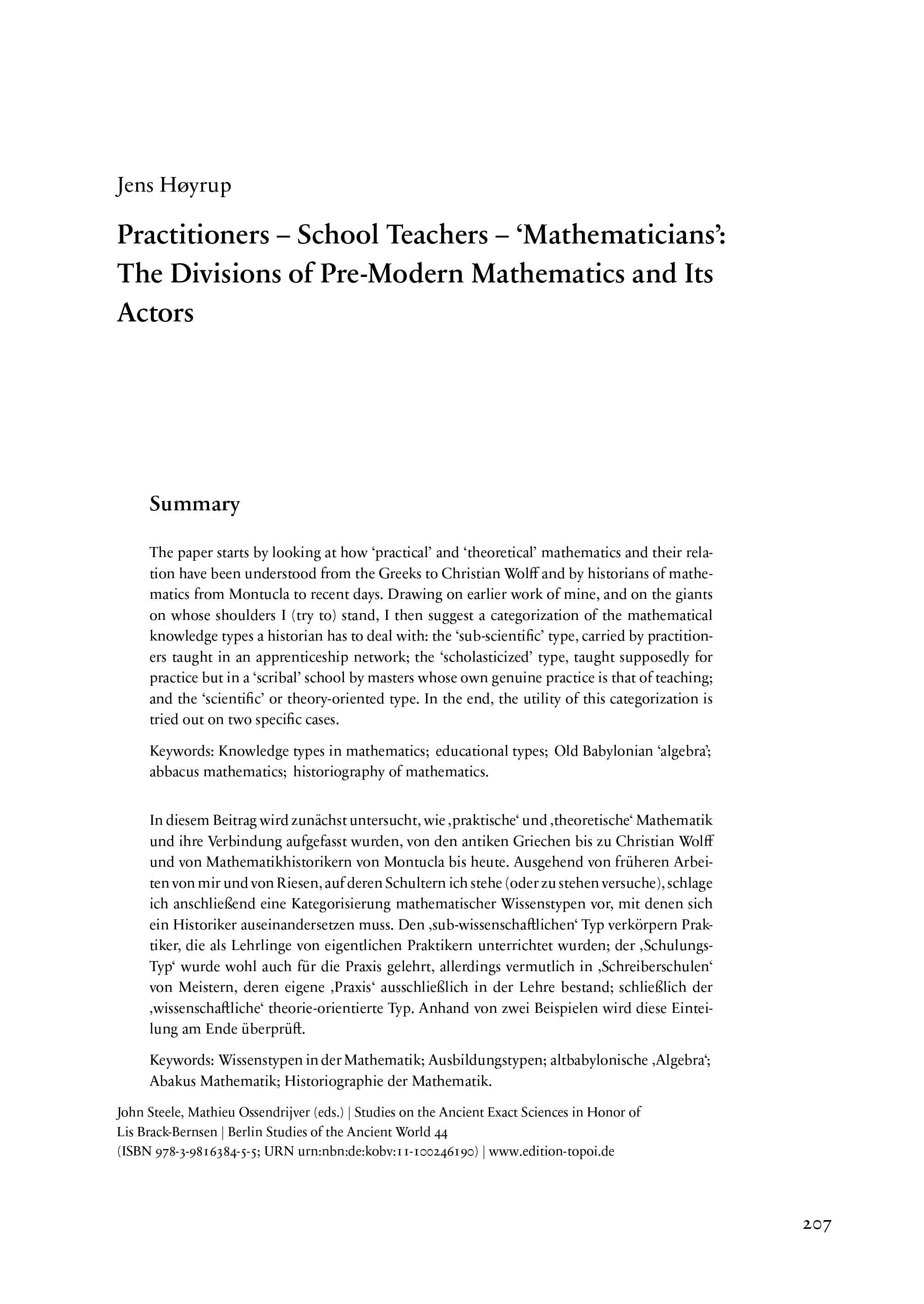Practitioners - School ‘Mathematicians’: The Divisions of Pre-Modern Mathematics and Its Actors
The paper starts by looking at how ‘practical’ and ‘theoretical’ mathematics and their relation
have been understood from the Greeks to Christian Wolff and by historians of mathematics
from Montucla to recent days. Drawing on earlier work of mine, and on the giants
on whose shoulders I (try to) stand, I then suggest a categorization of the mathematical
knowledge types a historian has to deal with: the ‘sub-scientific’ type, carried by practitioners
taught in an apprenticeship network; the ‘scholasticized’ type, taught supposedly for
practice but in a ‘scribal’ school by masters whose own genuine practice is that of teaching;
and the ‘scientific’ or theory-oriented type. In the end, the utility of this categorization is
tried out on two specific cases.
In diesem Beitrag wird zunächst untersucht, wie ‚praktische‘ und ‚theoretische‘ Mathematik
und ihre Verbindung aufgefasst wurden, von den antiken Griechen bis zu Christian Wolff
und von Mathematikhistorikern von Montucla bis heute. Ausgehend von früheren Arbeiten
von mir und von Riesen, auf deren Schultern ich stehe (oder zu stehen versuche), schlage
ich anschließend eine Kategorisierung mathematischer Wissenstypen vor, mit denen sich
ein Historiker auseinandersetzen muss. Den ‚sub-wissenschaftlichen‘ Typ verkörpern Praktiker, die als Lehrlinge von eigentlichen Praktikern unterrichtet wurden; der ‚Schulungs-
Typ‘ wurde wohl auch für die Praxis gelehrt, allerdings vermutlich in ‚Schreiberschulen‘
von Meistern, deren eigene ‚Praxis‘ ausschließlich in der Lehre bestand; schließlich der
‚wissenschaftliche‘ theorie-orientierte Typ. Anhand von zwei Beispielen wird diese Einteilung
am Ende überprüft.

